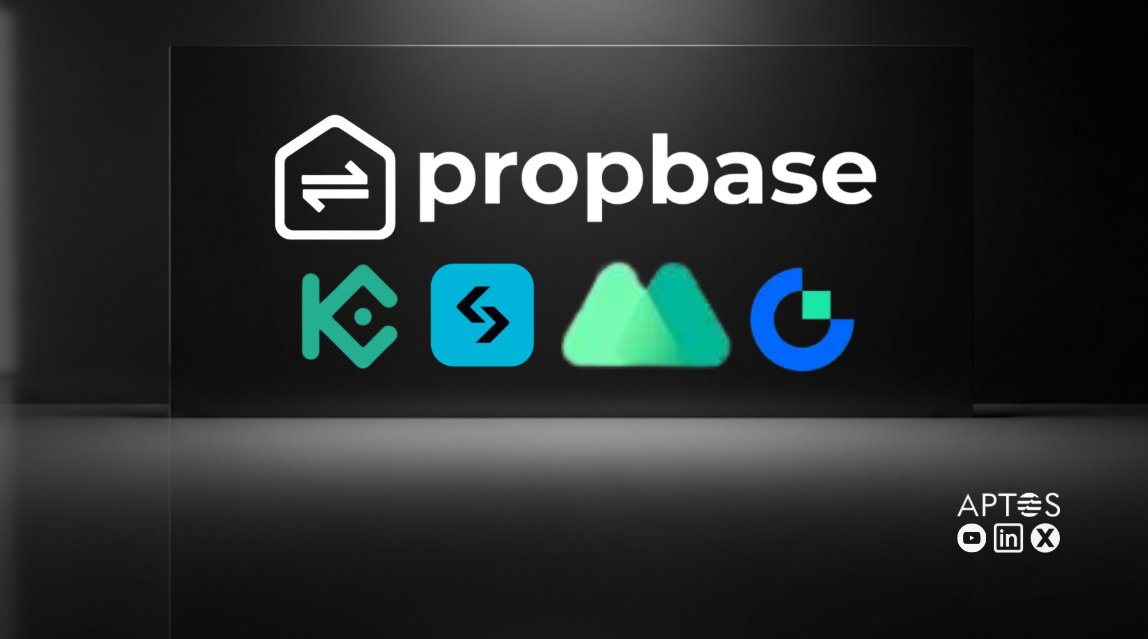Aptos price
in USDCheck your spelling or try another.


About Aptos
Aptos’s price performance
Aptos in the news

Support has formed in the $4.38-$4.41 zone, with resistance at $4.50.

The AAVE price jumped 19% to $355.29 as following Aave going live on Aptos, Jerome Powell's dovish comments on Friday and a rumor about Aave's alleged exposure to the WLFI token.

Aptos (APT) joined Chainlink (LINK) as an underperformer, shedding 3.2% from Monday.

Support has formed in the $4.61-$4.66 zone with resistance at the $4.72 level.

The trading platform combines spot, perpetuals and yield strategies into a single interface, aiming to offer CEX-like speed with DeFi transparency.
Aptos on socials






Guides

Aptos on OKX Learn




Aptos FAQ
APT is the native token of the Aptos blockchain and is vital in facilitating transaction and network fees within the platform. APT is also a governance token, allowing holders to vote on key decisions within the project.
Aptos proudly positions itself as the fastest Layer 1 blockchain, claiming to process up to 160,000 transactions per second (TPS).
Easily buy APT tokens on the OKX cryptocurrency platform. Available trading pairs in the OKX spot trading terminal include APT/USDT and APT/USDC.
You can also swap your existing cryptocurrencies, including XRP (XRP), Cardano (ADA), Solana (SOL), and Chainlink (LINK), for APT with zero fees and no price slippage by using OKX Convert.
Dive deeper into Aptos
Throughout 2022, the Layer 1 protocol landscape witnessed significant advancements. Ethereum's shift to Proof of Stake (PoS) and the NFT boom shed light on blockchain limitations under heightened demand. Amidst the increasing adoption of cryptocurrencies, ensuring resilient data protection and security infrastructure has become imperative, particularly given the surge in online vulnerabilities.
Addressing these concerns, Aptos emerges as a promising contender. Leveraging its scalable, secure, and dependable network, Aptos has garnered considerable attention from industry developers.
What is Aptos
Aptos stands as a robust Layer 1 Proof of Stake (PoS) blockchain solution, emphasizing security, dependability, and user-friendliness. Built using the Move programming language, Aptos boasts an array of advanced features, with its mainnet, "Aptos Autumn," making its debut on October 17, 2022.
Aptos operates through three fundamental components: the Move language (a smart contract programming tool), the Aptos Move data model, and the Move module, all collaboratively enabling a transaction processing capacity of up to 160,000 transactions per second (TPS).
Additionally, Aptos prioritizes security, employing robust measures to safeguard user assets and information. Currently, the Aptos ecosystem accommodates over 19 decentralized finance (DeFi) initiatives, spanning liquid staking platforms, decentralized exchanges (DEX), lending protocols, and more.
The Aptos team
Aptos has its origins in the Meta (formerly Facebook) Web3 initiative known as "Diem." The team, including its CEO Mo Shaikh and CTO Avery Ching, was initially part of Diem's development. Despite Meta discontinuing Diem in January 2022, the committed team decided to persist, leading to the establishment of Aptos. This dedicated group now operates under the name "Aptos Labs".
How does Aptos work
Aptos utilizes advanced technologies and components to establish a fast, scalable, and secure system. The Move programming language, developed specifically by the Diem team and adopted by Aptos developers, plays a crucial role in the blockchain's functionality. It enables easier auditing and analysis of blockchain data, enhancing security and transparency. Additionally, Move has a virtual machine, a compiler, and a verifier called Mover Prover, designed for smart contracts.
Aptos employs the Move Virtual Machine (MVM) as its state machine, similar to the Ethereum Virtual Machine (EVM). The MVM converts Move modules into bytecodes that the Aptos blockchain can interpret.
Aptos’ mainnet currently operates on the latest version of AptosBFT (version 4). AptosBFT, short for Aptos Byzantine Fault Tolerance, is a consensus technique known for optimizing network processes. This protocol mitigates the effects of failed validators on the system's throughput and latency.
On October 19, 2022, Aptos launched the Aptos Bridge. This feature enables the seamless transfer of Tether (USDT), USD Coin (USDC), and Ethereum (ETH), between the Aptos network and various decentralized systems such as Avalanche, Ethereum, Polygon, and Binance Smart Chain (BSC). Users can withdraw their cryptocurrencies from the Aptos network with the Aptos Bridge. However, a three-day transfer window is endorsed for such withdrawals to ensure network stability.
Aptos’s native token: APT
APT is the native utility token of the Aptos blockchain. It is the foundation for decentralized governance of the Aptos network, granting APT holders the right to vote on decisions that influence the future of the platform.
APT tokenomics
Aptos has a total supply of 1,034,718,849 APT tokens with no maximum supply. By September 2032, the total supply of Aptos will hit 1.5 billion APT. Aptos has a burn mechanism which reduces the circulating supply by destroying APT tokens from fees and reward blocks.
The token can also be used across the entire Aptos ecosystem. APT uses a standard implementation which improves its interoperability and compatibility across the Aptos ecosystem.
APT use cases
APT functions as the utility and governance token of the Aptos network. It serves as payment for gas fees for transactions on the Aptos blockchain. It is also used to incentivize community contributions and security services of validators on the network.
Distribution of APT
Aptos launched in October 2022 with an initial supply of 1 billion APT tokens distributed as follows:
- 51.02 percent was airdropped to community members.
- 19 percent was issued to Aptos core contributors.
- 16.5 percent was reserved for the Aptos Foundation.
- 13.48 percent was allocated to investors.
The road ahead for Aptos
The Aptos team has announced that the fifth and latest version of AptosBFT is under development and will be released in a future upgrade to increase the scalability of the network to support the development of more decentralized applications (dApp). In addition, Aptos is now working with Mastercard to build a decentralized infrastructure for on-chain identity and payments.
Disclaimer
OKX does not provide investment or asset recommendations. You should carefully consider whether trading or holding digital assets is suitable for you in light of your financial condition. Please consult your legal/tax/investment professional for questions about your specific circumstances. For further details, please refer to our Terms of Use and Risk Warning. By using the third-party website ("TPW"), you accept that any use of the TPW will be subject to and governed by the terms of the TPW. Unless expressly stated in writing, OKX and its affiliates (“OKX”) are not in any way associated with the owner or operator of the TPW. You agree that OKX is not responsible or liable for any loss, damage and any other consequences arising from your use of the TPW. Please be aware that using a TPW may result in a loss or diminution of your assets. Product may not be available in all jurisdictions.



































